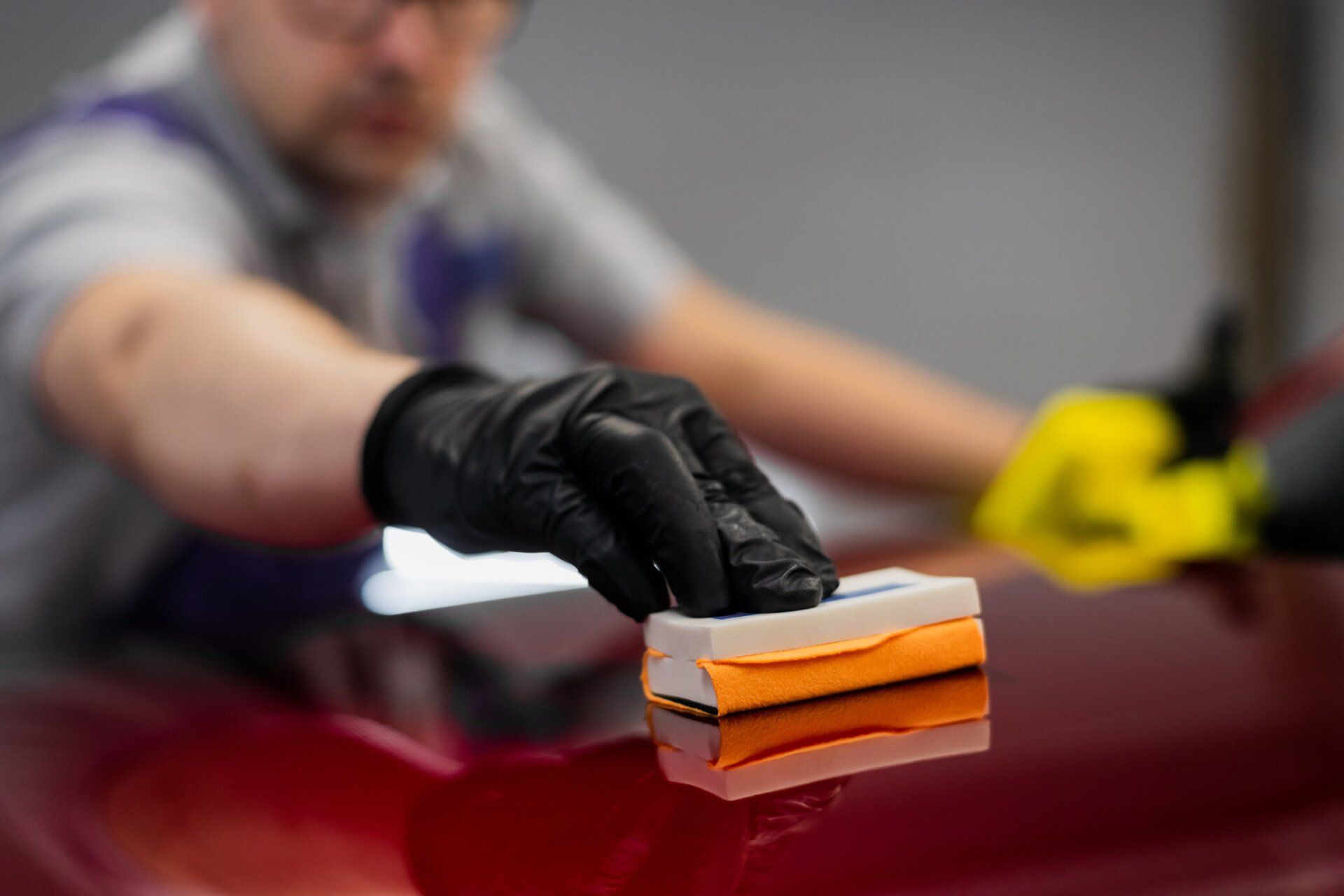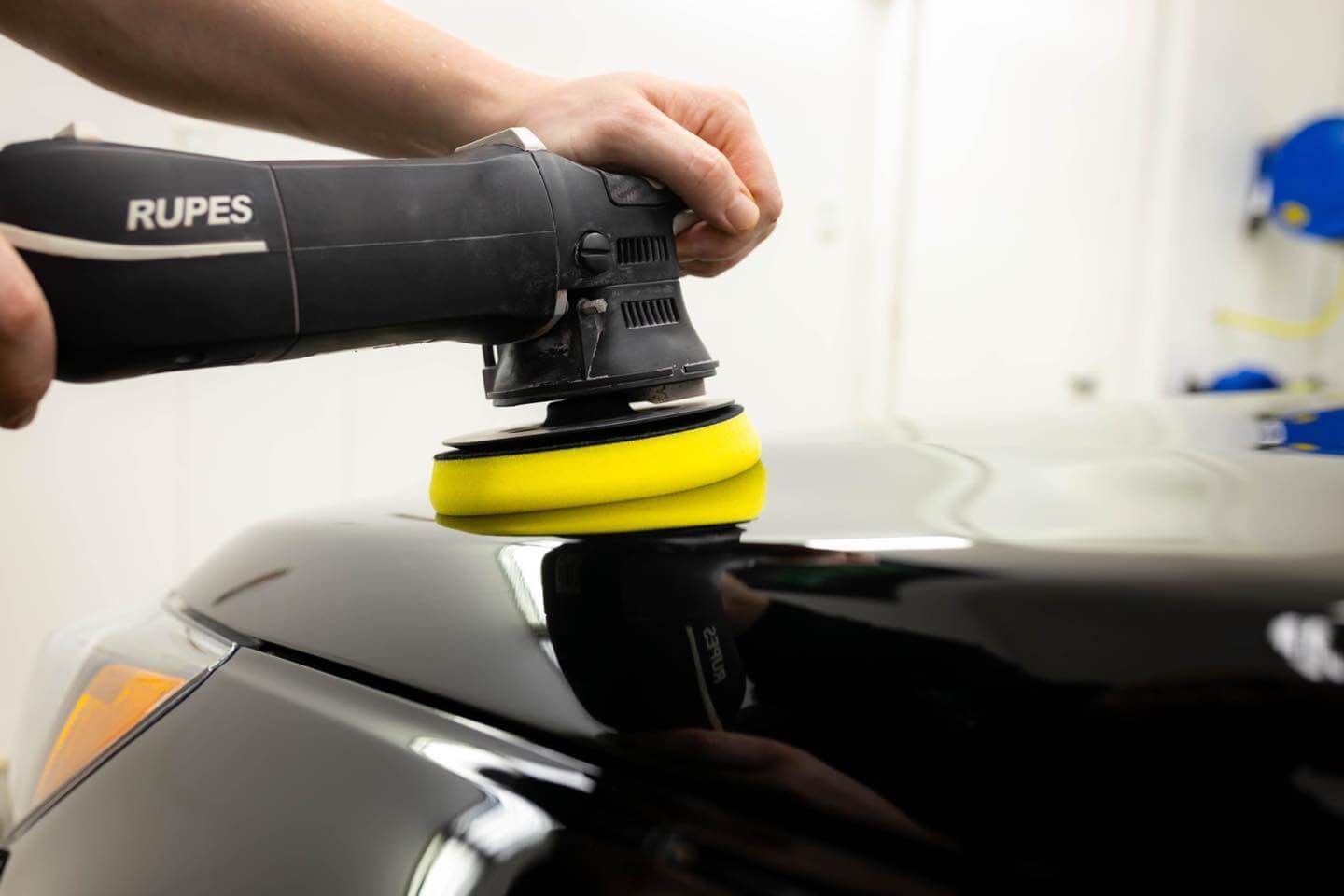Imagine trying to remove bubble gum from a frozen sidewalk or scraping off years-old grime stuck on an age-old masterpiece. The thought itself seems laborious and even frustrating. What if there's an unexpected hero who makes these hassles a thing of the past? Enter the world of dry ice blasting, an innovative solution revolutionizing the auto detailing industry.
This groundbreaking technique brings precision, speed, and environmental-friendliness to areas once deemed impossible to reach. In this blog post, we'll delve deep into the heart of dry ice blasting, uncovering the magic that lies within it for car enthusiasts and professional detailers alike.
Don't miss out on your opportunity to learn about the future of auto detailing!
Understanding Dry Ice Blasting
Have you ever wondered how to keep the surface of your car free from dirt, grime, and rust? If so, then dry ice blasting is a cleaning method that you should know about. This innovative technique is becoming increasingly popular in the automotive industry as it offers a fast and effective way of cleaning without leaving any residue.
But what exactly is dry ice blasting?
To put it simply, dry ice blasting is a process of cleaning that involves shooting compressed air with solid carbon dioxide particles onto surfaces at high speeds. The pressure of this air forces the particles onto the surface, where they break down the unwanted contaminants into small pieces that can be easily removed.
A good analogy for dry ice blasting is sandblasting, but with less abrasive force and no secondary waste. Unlike other methods such as media blasting or sandblasting, dry ice blasting doesn't use water or chemicals to clean the surface. Instead, it uses solid CO2 pellets that quickly sublimate into gas when they hit the material.
You might be wondering what benefits this unique cleaning method holds over traditional ones.
One significant benefit of dry ice blasting is that it's non-corrosive and doesn't leave any residue. This makes it suitable for restoring classic cars or otherwise delicate parts without damaging even sensitive components like electrical wiring systems or hydraulic hoses. Another advantage is that since the technique uses only compressed air and frozen CO2 pellets, it's much safer for workers than traditional methods. This lack of risk means fewer worker compensation claims and a better overall reputation for your business.
With an idea of what dry ice blasting is, let's explore some of its applications in auto detailing.
What is Dry Ice Blasting?
Dry ice blasting uses compressed air and small dry-ice pellets at great velocity to remove contaminants from the surface of a vehicle. The pellets are projected onto the surface while in solid form and immediately sublimate into carbon dioxide gas, freezing and loosening the contaminant as they go.
This freezing effect causes small cracks in the material, which helps with the effective removal of dirt, grime, and rust.
One significant advantage of dry ice blasting is that it's strong enough to clean heavy buildup yet sensitive enough to clean delicate components without causing any damage or removing any critical features like serial numbers and markings.
This makes it ideal for almost any part of the automobile, including the underbody, engine compartments, transmissions, axles, tail light assemblies, AC compressors, emblems, carburetors, instrument panels, interior consoles, wheels, electrical assemblies, and hydraulic hoses.
Think of dry ice blasting as a high-pressure washer with no water involved. Instead of using harsh chemicals or abrasive agents like sandpaper to scrape off dirt and rust from your car's exterior surface, dry-ice cleaning uses CO2 pellets to pound away at grime and eliminate other debris without causing destruction.
However, one thing to keep in mind is that even though dry ice blasting doesn't require water or chemicals, it does emit CO2 into the atmosphere. But given that CO2 is not considered a greenhouse gas unless it is captured and stored long-term underground (known as “carbon capture and storage," or CCS), most specialists do not consider this aspect of environmental concern.
With a thorough understanding of what dry ice blasting actually involves, let's look at some benefits of using this technique in auto detailing.
Equipment and Materials Required
Dry ice blasting in auto detailing involves specialized equipment and materials. As previously mentioned, dry ice blasting is a clean, non-abrasive, and environmentally friendly method of cleaning vehicles and their components.
This unique cleaning technique requires a few essential items to execute properly.
Firstly, it's essential to have a reliable source of compressed air that can generate high pressure to force the pellets through the delivery hose. The compressed air should have a flow rate of at least 100 cubic feet per minute (CFM) for optimum performance.
Without sufficient pressure, the pellets may not be able to sublimate and lift off the dirt and grime from the vehicle surfaces.
Secondly, a dry ice blasting machine is needed to blast the compressed air carrying the small dry ice pellets onto the target surface. The machine could either be electric or pneumatically powered, with varying levels of portability and consistency in cleaning action.
Finally, dry ice pellets are also required for effective cleaning. They could either be made via pelletizers from CO2 tanks or purchased pre-made from suppliers who specialize in selling dry ice for various applications such as welding, food preservation, transportation of temperature-sensitive goods, and more.
With appropriate equipment and materials for dry ice blasting sorted out, next we will explain some benefits this technique grants auto detailing.
- Studies show that dry ice blasting can reduce cleaning time by up to 50% when compared to traditional methods such as sandblasting, making it a more efficient option for automotive detailing.
- Dry ice blasting is known for its versatility, as it can be used on various components in an automobile without causing damage, even in tight crevices or sensitive areas like electrical assemblies and hydraulic hoses.
- Research indicates that using dry ice blasting in the automotive industry not only provides a superior cleaning solution but also eliminates the need for wastewater collection systems and reduces secondary waste, making it a more environmentally friendly option.
Benefits of Dry Ice Blasting in Auto Detailing
There are several benefits that make dry ice blasting a popular method of auto detailing among car owners.
Firstly, it is a clean and safe method to remove adhesive residue, paint, and other contaminants such as dirt, grime, rust, and oil from most vehicle surfaces. Unlike traditional cleaning methods that may generate water waste or equipment corrosion, dry ice blasting uses no liquid medium during the cleaning process.
Therefore, there is no secondary waste stream or ecological footprint left after cleaning. Impressively, this environmentally friendly feature of dry ice blasting has earned it recognition among several eco-conscious industries.
Secondly, dry ice blasting is like having a pressure washer with finely shredded ice pellets instead of water. These tiny pellets are less abrasive than what you would expect from traditional sandblasting and soda blasting methods. They delicately remove unwanted materials such as paint and rust without leaving any impact on the metal underneath.
Thirdly, due to the technique's precision in cleaning action,
auto detailers can easily target tight spaces like engine bays or gaps between car parts without damaging delicate components. For example, when using brushes or solvents to clean intricate car parts that require more attention to detail than larger parts like hoods or doors, they might accidentally scratch some surfaces or ruin their orientation.
Dry ice blasting eliminates this problem entirely since it doesn't upset either the original features of the components or change their orientation.
One potential drawback of dry ice blasting is that it doesn't work so well when removing old paint layers from antique cars since these paints have more bonding strength with the metal. Besides antiquity requirements, other concerns with using dry ice blasting may be its high costs regarding machinery and material, which may put off some auto detailing businesses operating on a budget.
Next, we will discuss applications of dry ice blasting in auto restoration.
Enhanced Cleaning and Debris Removal
Auto detailing is all about leaving your car as clean and polished as possible, and dry ice blasting offers features that ensure optimal cleaning performance. Unlike traditional methods like sandblasting or solvent immersion, dry ice blasting not only cleans the surface but also removes debris with a non-abrasive, non-corrosive stream of dry ice particles.
This technique uses tiny pellets of solid carbon dioxide to blast away grime and grease in addition to removing oil, adhesives, tar, burnt rubber, paint overspray, and even rust.
Imagine having grease stains on your engine compartment. You could spend hours scrubbing it off with soap and water or solvents, not to mention the potential damage to surrounding components. With dry ice blasting, the process takes less than half an hour to remove grime and dirt without affecting other areas, leaving you with the same treasured engine but now spotless.
Besides being an excellent cleaning solution, another advantage of using dry ice is that it disappears upon impact. Since it sublimates without turning into liquid form, there is no need for secondary waste production or wastewater collection systems.
Therefore, you wouldn't have to worry about any inconvenient cleanup process after detailing.
In comparison with other auto detailing methods like pressure washing or chemical cleaning solutions, which use a large number of gallons of water and hazardous chemicals that can pollute our environment over time, these methods also cause significant damage to vehicle surfaces and can strip off expensive coatings or finishes.
Dry ice cleaning, on the other hand, eliminates any environmental risks by utilizing CO2 that would otherwise be released into the air upon exposure.
Applications in Auto Restoration
Restoration is one of the most challenging facets of auto detailing, and dry ice blasting has proven to be one of the most efficient solutions for restoring vintage vehicles to their original state.
Think of dry ice blasting as an eraser that can remove paint overspray, tarnish, or rust quickly and effectively without leaving any damage behind. This feature makes it the best option when restoring old cars with delicate surface finishes or those that require spot sanding in a specific area.
Dry ice blasting is also effective in removing grime from classic car components like electrical assemblies, axles, alternators, engine compartments, hydraulic hoses, tail light assemblies, instrument panels, carburetors, AC compressors, and many more. Since it is non-abrasive and non-corrosive, there's no risk of damaging or altering original features such as serial numbers or markings.
For example, let's say you have a classic 1960s muscle car with a rusted underbody. Dry ice blasting can help restore the metal material, retaining its original finish while effectively removing debris from every corner without leaving any residue. The appearance will improve drastically if you make sure that you do not compromise any original materials used in construction.
Still not convinced? You may argue that traditional restoration methods such as sandblasting and chemical striping have been around for years and are known to bring out the best in vehicles. But we need to consider their impact on surrounding components and the environmental pollution that results from hazardous waste disposal.
Unlike these traditional techniques, dry ice blasting eliminates waste while limiting its impact on the environment, and it finishes your vehicle miles ahead of what was possible with prior methods. With this novel restoration method, you don't need to spend countless hours scrubbing each panel or component by hand; restoration is considerably simplified using dry ice blasting techniques.
Now that we understand how dry ice blasting helps restore automobiles, let's see how we can implement it into our detailing process.
Dry Ice Blasting Process and Techniques
Dry ice blasting, also known as
CO2 blasting, is a safe and effective cleaning method that requires specialized equipment and techniques. Here's how it works:
Firstly, the dry ice pellets are loaded into the blasting unit, where they are accelerated through a nozzle using high-pressure compressed air. When the pellets hit the surface to be cleaned, they undergo a thermal shock, which causes them to sublimate (turn from solid to gas), leading to an increase in volume of up to 700 times.
This sudden expansion causes the targeted dirt or grime layer to lift away from the surface, which then falls to the ground as waste.
Unlike traditional cleaning methods, dry ice blasting requires little prep time or setup effort. Hard-to-reach corners and crevices are easily cleaned without having to disassemble machinery, making it perfect for deep cleaning auto components.
There are different levels of abrasiveness when it comes to dry ice blasting, ranging from low to high. The level of abrasiveness will depend on the condition of the material or component being cleaned. The thickness or level of accumulation of contaminants will dictate how aggressive a blast is needed since some contaminants may be more stubborn than others.
A great example is using dry ice blasting on wheels and other car components. While one may find that brake dust can be challenging to remove by hand scrubbing with soap and water alone, dry ice can remove even the toughest and heaviest particles quickly and completely without danger or damage being done.
During restoration projects such as paint removal prior to refinishing panels or frames, dry ice blasting is commonly used as it removes paint thoroughly while keeping parts undamaged.
But what about delicate surfaces like upholstery inside vehicles? While abrasive blasting techniques can be too rough for such surfaces, dry ice blasting is gentle enough to not damage them. Additionally, keep in mind that dry ice blast cleaning utilizes very low moisture so that there is no water waste, such as when washing or steam cleaning.
Now that we've covered dry ice blasting's process and techniques, let's look at its environmental impact.
Environmental Impact of Dry Ice Blasting
Compared to other cleaning solutions, dry ice blasting provides significant environmental benefits. Here's why:
Unlike sandblasting or waterjet cleaning, there is no secondary waste with dry ice blasting since the CO2 pellets sublime into air upon impact. Not only does this mean a cleaner workspace during and after use, but it also eliminates the need for additional cleanup equipment and wastewater disposal. Moreover, dry ice blasting has a virtually zero ecological footprint because there are no chemicals or toxic residues left on surfaces after blasting.
By using CO2 pellets, auto detailers can clean while protecting the environment from solvents and hazardous disposal concerns. Consider how rainwater naturally cleans our environment by removing dirt and debris from surfaces. Dry ice blasting is a method of harnessing natural power in an engineered way that does not harm the environment.
Dry ice blasting can remove paint from intricate designs in automotive restorations where conventional techniques require heavy chemical use and disposal methods.
Get Your Car Show-Ready With Our Premier Automotive Detailing in Rochester, MN
In the field of car detailing, dry ice blasting is a breakthrough cleaning process. This non-abrasive and environmentally friendly approach offers exceptional benefits by utilizing solid carbon dioxide (CO2) pellets. It easily removes dirt, grease, glue, and even paint without leaving any residue. Dry ice blasting is a safe and environmentally friendly option because it leaves no residue or dangerous chemicals behind. Including this revolutionary procedure in your automotive detailing practice will improve the appearance and longevity of your prized possessions.
We at Five Star Auto Detailing believe that your vehicle deserves the best. Our highly skilled personnel are committed to providing excellent treatment and precise attention to detail. We have the skills to surpass your expectations, whether you want to enhance the shine, remove tough stains, or protect the paint on your vehicle.
Give us a call today to learn more information and schedule your free consultation!






